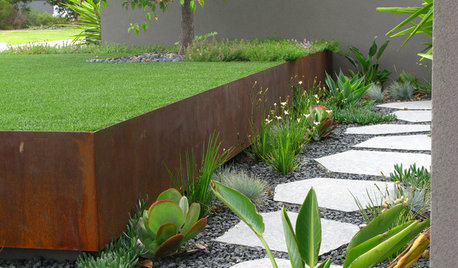Birch question, any Tree People?
samiamvt
15 years ago
Related Stories

EXTERIORSCurb Appeal Feeling a Little Off? Some Questions to Consider
Color, scale, proportion, trim ... 14 things to think about if your exterior is bugging you
Full Story
KITCHEN DESIGN9 Questions to Ask When Planning a Kitchen Pantry
Avoid blunders and get the storage space and layout you need by asking these questions before you begin
Full Story
FEEL-GOOD HOMEThe Question That Can Make You Love Your Home More
Change your relationship with your house for the better by focusing on the answer to something designers often ask
Full Story
REMODELING GUIDESConsidering a Fixer-Upper? 15 Questions to Ask First
Learn about the hidden costs and treasures of older homes to avoid budget surprises and accidentally tossing valuable features
Full Story
SELLING YOUR HOUSE15 Questions to Ask When Interviewing a Real Estate Agent
Here’s what you should find out before selecting an agent to sell your home
Full Story
GREEN BUILDINGConsidering Concrete Floors? 3 Green-Minded Questions to Ask
Learn what’s in your concrete and about sustainability to make a healthy choice for your home and the earth
Full Story
GREEN DECORATING8 Questions to Help You See Through Green Hype
With the ecofriendly bandwagon picking up some dubious passengers, here's how to tell truly green products and services from the imposters
Full Story
ORGANIZING4 Questions to Help You Organize Your Favorite Photos
Organize your keeper photos with a system that's just right for you, whether it's in the cloud or you can hold it in your hand
Full Story
LANDSCAPE DESIGN7 Questions to Ask Before Laying Stepping Stones
These broken-up pathways invite you to put a spring in your step — while adding functionality to the garden
Full Story
CURB APPEAL7 Questions to Help You Pick the Right Front-Yard Fence
Get over the hurdle of choosing a fence design by considering your needs, your home’s architecture and more
Full Story





georgez5il
jrhodo
Related Professionals
Rossville Landscape Architects & Landscape Designers · Saint Matthews Landscape Architects & Landscape Designers · Allentown Landscape Contractors · Americus Landscape Contractors · Byram Landscape Contractors · Ellicott City Landscape Contractors · Indianapolis Landscape Contractors · Lantana Landscape Contractors · North Potomac Landscape Contractors · Old Saybrook Landscape Contractors · Palm Beach Gardens Landscape Contractors · Pleasant Hill Landscape Contractors · Richmond Landscape Contractors · Siloam Springs Landscape Contractors · Escondido Driveway Installation & Maintenancegardengal48 (PNW Z8/9)
gonativegal
gardengal48 (PNW Z8/9)
Mike Larkin
gonativegal
gardengal48 (PNW Z8/9)
calliope
gonativegal
petzold6596
Embothrium
Embothrium
inkognito
inkognito
calliope
samiamvtOriginal Author
Embothrium
rhizo_1 (North AL) zone 7
muddydogs
heptacodium
Embothrium
sam_md
inkognito